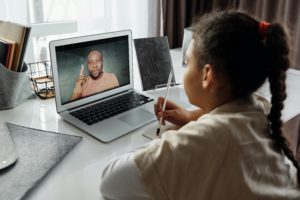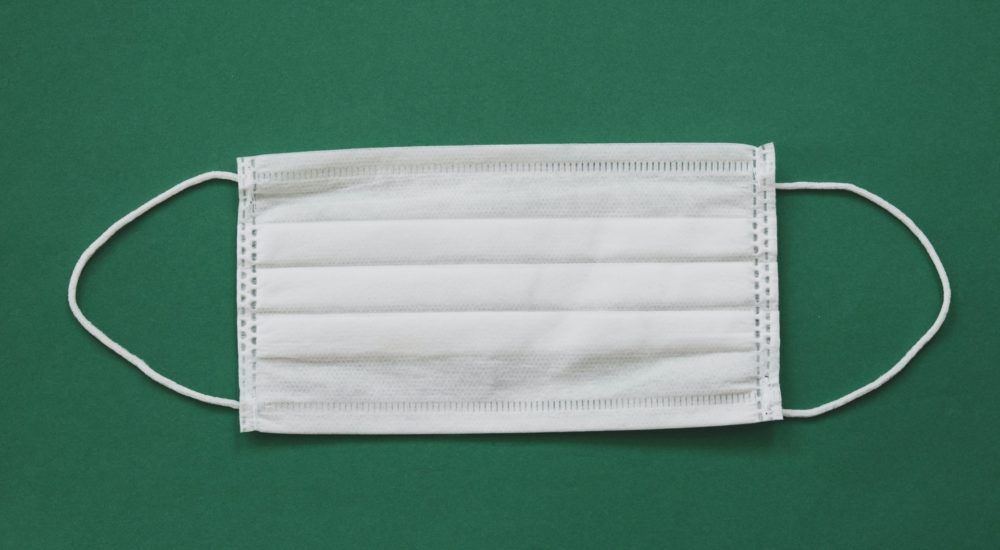 I just finished my spinach smoothie for breakfast and am reflecting on how we all work hard these days to stay healthy and sane. My wife makes me spinach smoothies to start the day, and I drink them, though I don’t like them, because they are promising—hopeful for good health and energy. We need both, especially in these trying times of global pandemic, social distancing, and online learning.
I just finished my spinach smoothie for breakfast and am reflecting on how we all work hard these days to stay healthy and sane. My wife makes me spinach smoothies to start the day, and I drink them, though I don’t like them, because they are promising—hopeful for good health and energy. We need both, especially in these trying times of global pandemic, social distancing, and online learning.
Friday, March 13, 2020 (yep, Friday the 13th) will be remembered by many folks in the education world for a LONG time. It was the day our schools closed and learning moved online.
As a CEO of an education business—and as a former teacher and father of two public-school educated kids—I have never been so challenged by the state of education in this country. For the last few months, I was not sure if I could keep my educational organization afloat—if I could promise jobs to my staff and safe spaces for educational enrichment to deserving youth. I was also not sure what would happen for my own children. It was not an easy time.
We made it through the crisis of the spring and are now starting fall with distance learning, again with uncertainty about the future: will coronavirus spike again and prompt a year of online learning? Will distant learning (and socialization) be with us for the long-term?
 Rahm Emanuel popularized the phase, “Never Let A Good Crisis Go to Waste.” You hear that phrase in the world of business and politics, but what about in education? I am tired of hearing people in the field of education say, “When we get back to normal…” ‘Normal’ did not work for so many reasons, and for so many of our children. Why would we set our goal as getting back to “normal?” Let’s use this crisis and not let it go to waste. Let’s determine what we can learn from this crisis about the problems with our public education system, and let’s move forward by fixing them. No going back.
Rahm Emanuel popularized the phase, “Never Let A Good Crisis Go to Waste.” You hear that phrase in the world of business and politics, but what about in education? I am tired of hearing people in the field of education say, “When we get back to normal…” ‘Normal’ did not work for so many reasons, and for so many of our children. Why would we set our goal as getting back to “normal?” Let’s use this crisis and not let it go to waste. Let’s determine what we can learn from this crisis about the problems with our public education system, and let’s move forward by fixing them. No going back.
So, what have we learned during this pandemic?
1 – While there is still much debate about the effect of class size on student success (see the 1989 Project STAR report and the 2002 book, “The Class Size Debate”), it’s undeniable that a group of 6-10 children with one teacher, and possibly even an aide, can be incredibly effective in ensuring student are getting 1:1 support. The new term, “pods,” that we are reading so much about came from parents in crisis. In just a few weeks, the Pandemic Pods Facebook page has 38,000 followers. Maybe the new normal should value smaller teacher:student ratios and strive to get back to asking should class sizes be under 12 students? Not because we need the students to social distance but because that is what our children deserve…and not just the kids with families that can afford a private “pod.”
2 – Our most challenged students need our schools for more than just literacy and numeracy. At Los Angeles Unified, between March 18, 2020 and April 28, 2020, over 13,000,000 meals were given out at Grab and Go locations. Our schools are the only source of food for way too many of our children. We must continue to fully fund school meal programs.
3 – When we went virtual, we told our children to grab the iPad, connect to the internet, and keeping learning. But that level of access is not universal. COVID-19 showed us this truth in a glaring way. We need to invest in school infrastructure and accessibility for all students with a primary focus on our poorest neighborhoods.
4 – When talking with other parents of school-age children about how virtual education worked this past spring, I learned so much. Some children struggled. Many children disengaged completely. Many did brilliantly. The range was huge and it often correlated to socioeconomic status. Either way, we learned that children learn differently. All children deserve what is currently only available to our special education students: an Individual Education Plan (IEP).
COVID-19 has shined a light on the inequities in our public education system. We can, and must, do better as we try and get back to “normal.” Or, maybe we blow up “normal” and get committed to using what we have learned to create a public education works better.
For breakfast, I had a spinach smoothie.
Author: @blupien
